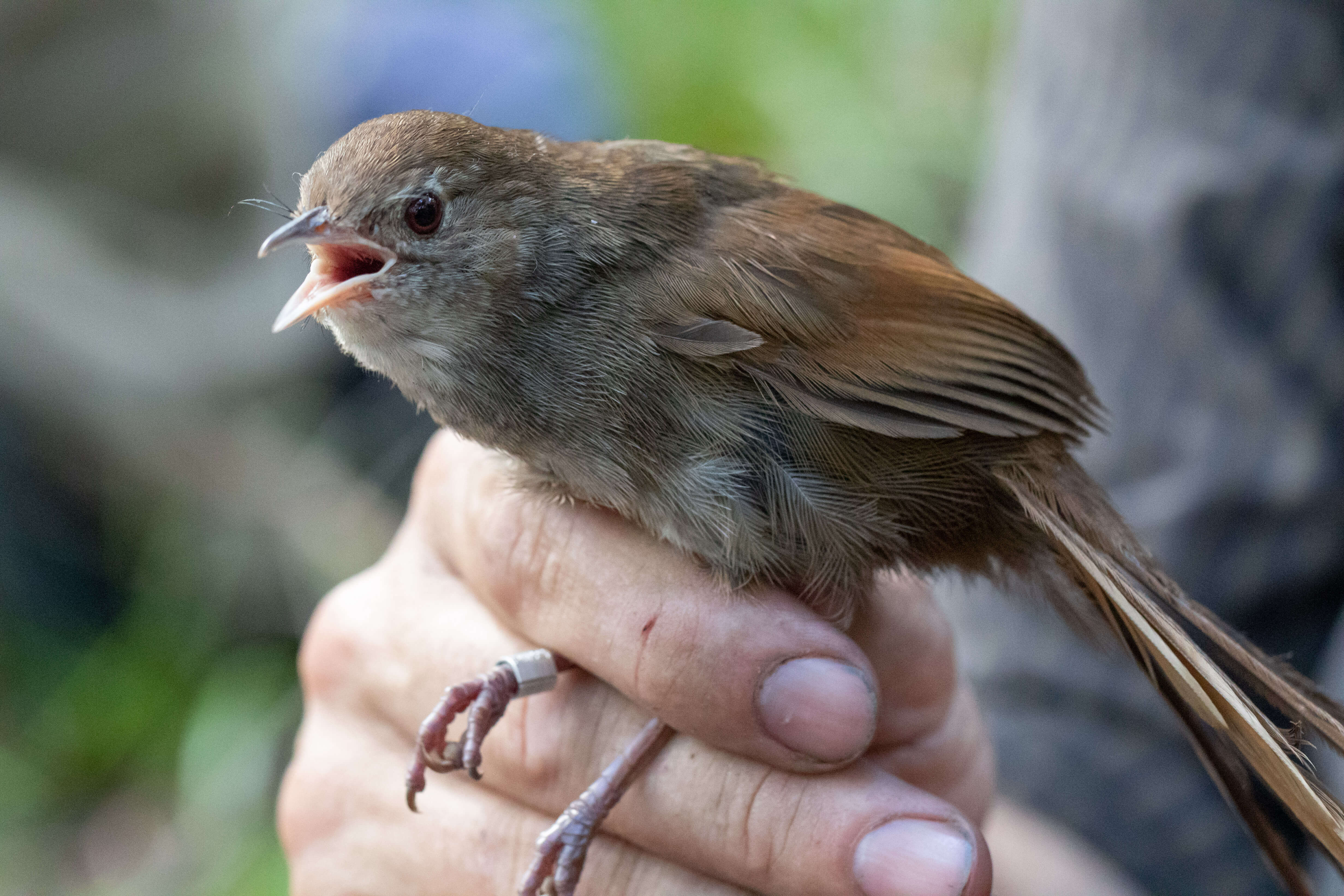
Image credit: Marcia
In Victoria, surveys estimated between 160 and 180 Eastern Bristlebird live within their restricted distribution at Howe Flat on Victoria’s eastern tip. Because the NSW population was also affected by the 2019-20 bushfires, the species was at risk of extinction if the Howe Flat was population lost.
This work is part of Victoria’s $54.5 million Bushfire Biodiversity Response and Recovery Program.
Eastern Bristlebird
Dasyornis brachypterus
- Critically endangered
- Lives in low, dense, ground or understorey vegetation. Victorian geographic distribution restricted to Howe Flat in the far eastern section of Croajingolong National Park.
- 58% of Victorian range burned in 2019/20 fires.
- Threatened by predation by foxes and cats, low diversity and catastrophic bushfires.
- Severe fire events cause death and habitat loss. Because of their small wings, Eastern Bristlebirds are poor fliers and unlikely to find refuge. Predation by cats and foxes through loss of vegetation cover and loss of the invertebrates they eat are threats to survival immediately after a fire.
What we did
As fires approached Howe Flat, the Department of Environment Land Water and Planning (DELWP), Parks Victoria and Zoos Victoria, in collaboration with BirdLife Australia, Currumbin Sanctuary and partners launched a complex mission to move in ahead of the fire front and evacuate birds.
Australian Defence Force aircraft and Fisheries Authority vessels transported crews and birds for the mission.
A small number of birds were extracted before conditions deteriorated and the crew had to be evacuated.
Zoos Victoria housed the birds with expert advice from university partners and Currumbin Wildlife Sanctuary.
Most birds were returned to Howe Flat in April 2020. Another bird, which was unwell in April, was returned in October.
Protocols are now in place to minimise capture stress.
What we’re doing now
- DELWP and partners are monitoring the Eastern Bristlebird population at Howe Flat.
- Zoos Victoria and DELWP have set up emergency extraction plans factoring in illness prevention strategies.
- Preparations are underway to translocate this species to improve its resilience.
- This program is a base for developing improved models for future interventions to prevent extinction of species during natural disasters.
How you can help
Visit the Zoos Victoria Safe cat, safe wildlife website to see how you can protect local wildlife and your cat.
See a video of the project in action
https://www.facebook.com/watch/?v=3105442466234046
Project partners
Zoos Victoria, Currumbin Wildlife Sanctuary, Monash University, University of Wollongong, Victorian Fisheries Authority, Parks Victoria.
Page last updated: 01/09/22